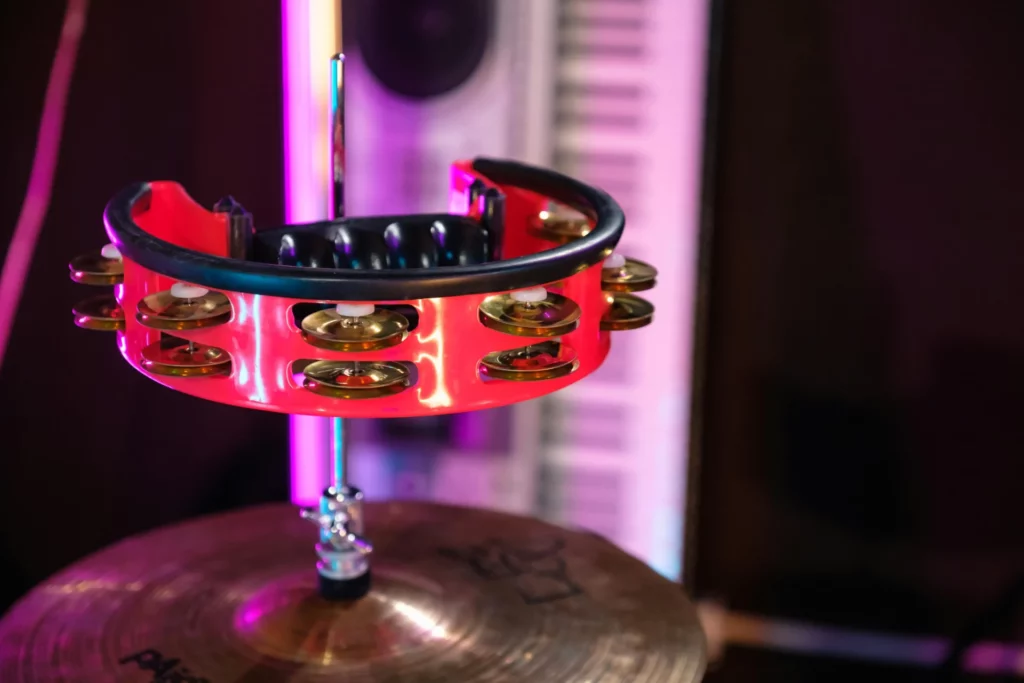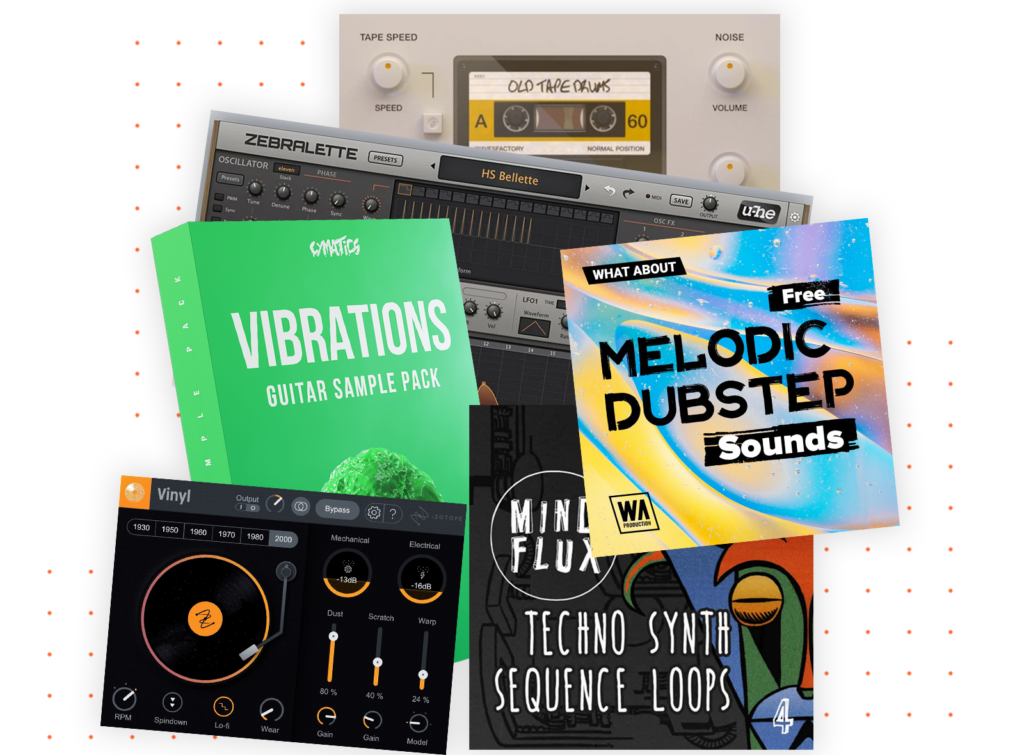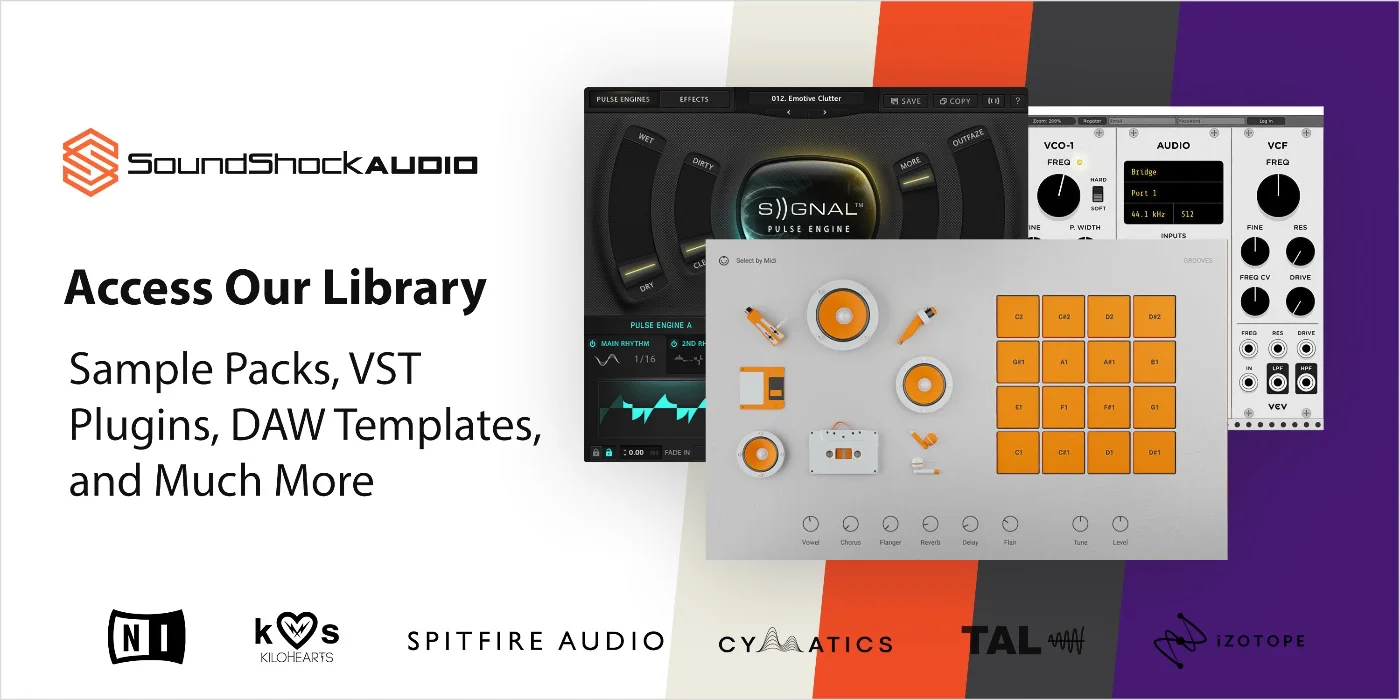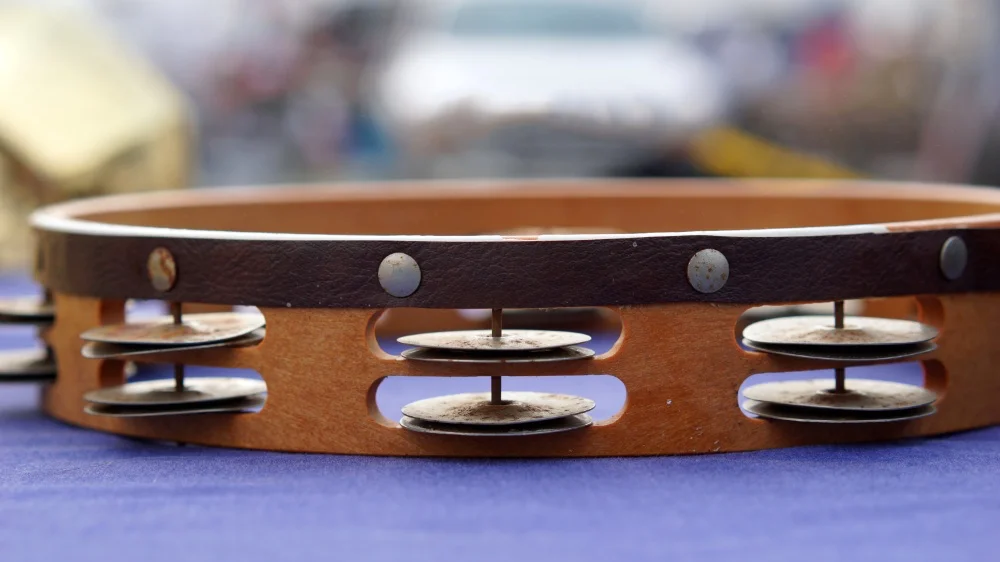The tambourine often gets overlooked in a mix.
Its unique timbre and rhythmic presence can add a distinctive flavor to various musical genres.
But if you don’t EQ it correctly, the timber a rhytmic presence won’t come through.
In this article, we’ll cover how to get a good tambourine percussion instrument recording and then how to EQ the tambourine in your mix.
Get a Good Tambourine Recording

Before EQing your tambourine, you need to make sure you have a good recording or else EQing will be difficult.
Here are some quick recording tips:
- Choose a high-quality condenser microphone that can handle the tambourine’s dynamic range and frequency spectrum
- Position the microphone a few inches away from the tambourine to avoid overloading the capsule and to allow for some natural room ambiance
- Record in a controlled environment with minimal background noise and reflections
Starting with a good recording makes the EQing process more effective so always make sure you have a good recording.
Step-by-Step Guide to EQing a Tambourine
EQing a tambourine can be a nuanced process, but following these steps will help you achieve a balanced and clear sound in your mix.
1. High-Pass Filtering
Start by applying a high-pass filter to remove unnecessary low frequencies.
Tambourine sounds typically do not have much useful information below 200-250 Hz, so setting your high-pass filter around this range will help clean up the low end and reduce any rumble or bleed from other instruments.
2. Cutting Muddy Frequencies
Identify and cut any muddy frequencies that might make the tambourine sound unclear. Frequencies around 250-500 Hz can often add unwanted muddiness.
Use a narrow Q setting to make precise cuts in this range.
3. Boosting Presence
To make the tambourine stand out in the mix, boost the mid to high frequencies.
A gentle boost around 10 kHz can add shimmer and presence, helping the tambourine cut through the mix without becoming harsh.
Use a moderate Q setting to ensure the boost is smooth and musical.
4. Controlling Harshness
If the tambourine sounds too harsh, especially in the higher frequency range, consider applying a slight cut around 6-8 kHz.
This can help tame any piercing sounds and make the tambourine more pleasant to the ear.
5. Compression
Use compression to control the dynamics of the tambourine. Set a fast attack and release time to catch the transient peaks and maintain a consistent level.
A ratio of around 3:1 to 4:1 is a good starting point. Adjust the threshold so that the compressor engages on the louder hits but leaves the softer hits more natural.
6. Multiband Compression (Optional)
For more control over the tambourine’s frequency range, consider using multiband compression.
This allows you to compress different frequency bands independently, ensuring that the high frequencies remain controlled without affecting the overall sound too much.
7. Panning and Reverb
To add width and depth to the tambourine, use panning and reverb. Panning the tambourine slightly to one side can help it sit better in the mix.
Adding a small amount of reverb can give it a sense of space and make it blend more naturally with other elements in the mix.
Example EQ and Compression Settings
- High-Pass Filter: 200-250 Hz
- Cut Muddy Frequencies: 250-500 Hz with a narrow Q
- Boost Presence: 10 kHz with a moderate Q
- Cut Harshness: 6-8 kHz with a narrow Q
- Compression: Fast attack (10 ms), fast release (15 ms), ratio 3:1 to 4:1, threshold adjusted to taste
- Multiband Compression: Focus on high frequencies above 7-8 kHz
Remember, the goal is to enhance the tambourine’s natural sound and ensure it fits well within the overall production.
By following these steps, you should be able to achieve a balanced and clear tambourine sound that enhances your mix.
Examples of Well EQed and Mixed Tambourines
To get a better understanding of how professional engineers approach EQing tambourines, let’s analyze some well-mixed tracks and hear from the experts.
In the song “Uptown Funk” by Mark Ronson ft. Bruno Mars, the tambourine plays a prominent role in driving the groove.
The mixing engineer, Serban Ghenea, likely used a combination of high-pass filtering and high-frequency boosting to make the tambourine cut through the dense mix while retaining its crisp, lively character.
According to Grammy-winning engineer Manny Marroquin, “The key to mixing tambourine is to find its place in the mix. It should be present but not overpowering. I often use a high-pass filter to remove any low-end mud and then focus on the mid and high frequencies to make it shine.”
Common EQ Mistakes to Avoid with Tambourine
While EQing can greatly enhance the sound of a tambourine, there are some common pitfalls to watch out for:
- Over-EQing: It’s tempting to keep tweaking the EQ settings, but excessive processing can make the tambourine sound unnatural or disconnected from the rest of the mix. Trust your ears and know when to stop.
- Neglecting context: Always consider how the tambourine fits into the overall mix. What might sound good soloed might be too loud or too bright when played alongside other instruments. Regularly check your EQ decisions in the context of the full mix.

Access 4,000+ Music Tools
Access our entire library of music tools including sample packs, VST plugins, DAW templates, and much more.
Final Thoughts
The key is to start with a good recording, make intentional EQ decisions based on the musical context, and always trust your ears.
With these resources and the techniques covered in this guide, you’ll be well on your way to achieving professional-sounding tambourine tracks in your mixes.
Download Music Production Tools on a Budget

Why spend hundreds or even thousands of dollars on music production tools when you can access them all for a low monthly fee at SoundShockAudio?
Subscribe now and start creating professional-sounding music without breaking the bank. We’ve got everything from sample packs, to VST plugins, and more.
Need more help when it comes to EQing?
Check out these articles:




hey, was reading through and wos wondering, have you got any tips for eq that helps tambourine blend better with low-fi genres? feels like it can get too jangly if that makes sense. nice article btw, Daniel.
TrixieMcGee, you might want to try rolling off a bit on the high end and boost mid-lows slightly, works for me in lo-fi tracks.
also, experiment with reverb to make it blend into the background more, just don’t overdo it or it’ll wash out.
Hey, i was wondering if the advanced EQ techniques for the tambourine could be used for other percussions as well? Not much experience with tambourine but trying to get my mix right.
Absolutely, Liz! Most EQ principles for tambourine can apply to other percussions, just be mindful of the unique frequency characteristics each instrument has.
Solid advice on getting that good rec. Always thought my tamb sounded off. gonna try changing up the EQ. Cheers, Daniel.
Daniel, nice job on the basics section. always thought eqing a tambourine was just about cutting the annoying highs but theres more to it huh
Not sure I agree with all the common EQ mistakes listed. I think some of those techniques can add character if used right. Anyone else?
Love the section on advanced EQ, never realised how much depth there was to tweaking the tambourine sound, definitely gonna apply some of these! 🙂
eq a tambourine, eh? back in my day, we just hit it softer or moved it away from the mic. all this gear and still no groove, ha.
This is just what I needed! I’ve been struggling to get a good sound from my tambourine recordings. Gonna try these tips out!
Interesting take on EQing tambourines but don’t you think it’s a bit overkill? Sometimes the natural sound is the best, especially with good mic placement.
Absolutely see your point, SynthNinja! Natural sound does have its charm, but some situations call for that extra control and polish. Thanks for sharing your thoughts!
While the article provides a solid foundation, it’s important to note that EQ settings are contingent on the mix’s context. No one-size-fits-all.
Good point, DJ_Spillz. It’s all about what fits the track best.
So, there’s no magic setting?
ah yes, the infamous tamb EQ. Next you’ll be telling us how to mic a cowbell for that extra *ding* in our tracks haha
After EQing my tambourine, it still doesn’t sound like Led Zeppelin’s. Maybe I should also grow a beard like Bonham? Thoughts?
never really thought much about EQing a tambourine, usually just throw it in the mix and adjust volume. might give these tips a try tho, seems like they could make a difference.
Great, after mastering the art of tambourine EQing, I’ll be ready to headline Wacken. Just got to remember not to forget my tambourine.